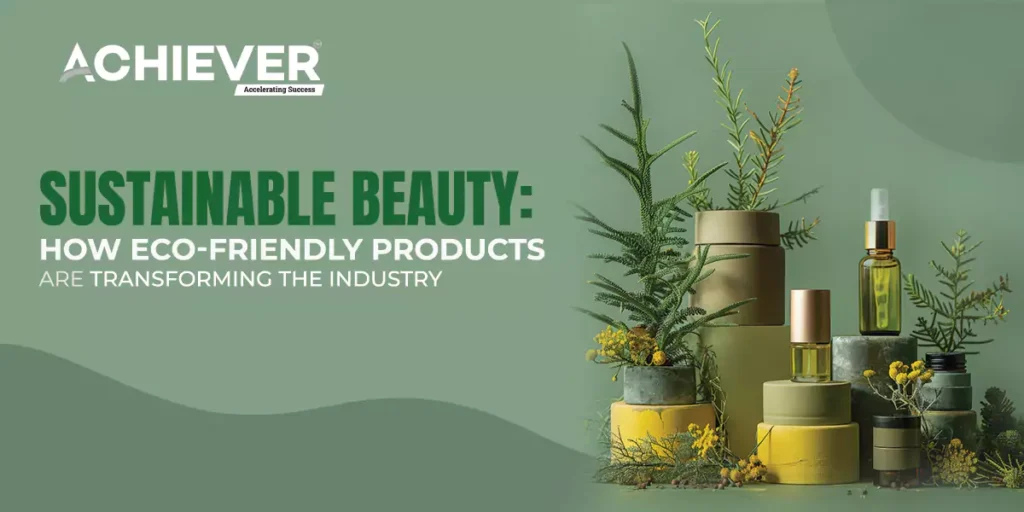In recent years, the beauty industry has experienced a significant transformation, driven by a growing consumer demand for sustainability and eco-friendliness. As awareness of environmental issues rises, more consumers are seeking beauty products that not only enhance their appearance but also contribute positively to the planet. This shift is prompting brands to rethink their strategies, leading to innovative practices that promote sustainability and redefine beauty standards.
The Shift Toward Sustainable Practices
The movement toward sustainable beauty is rooted in a broader trend of conscious consumerism, where individuals prioritize ethical sourcing, cruelty-free practices, and environmentally friendly packaging. According to a 2021 report by McKinsey & Company, 67% of consumers consider sustainability when making purchasing decisions, and this figure is even higher among younger demographics. Millennials and Gen Z, in particular, are vocal advocates for sustainability, demanding transparency from brands about their ingredients and sourcing practices.
Brands are responding to this demand by adopting eco-friendly practices throughout their supply chains. From sourcing raw materials responsibly to minimizing waste, the commitment to sustainability has become a crucial aspect of brand identity. This shift not only attracts environmentally conscious consumers but also fosters brand loyalty among those who prioritize ethical considerations in their purchasing decisions.
Eco-Friendly Ingredients
One of the most significant changes in the beauty industry is the focus on using eco-friendly ingredients. Many brands are replacing harmful chemicals with natural, biodegradable alternatives that are less damaging to the environment. Ingredients like plant-based oils, botanical extracts, and organic compounds are becoming mainstream, offering consumers effective beauty solutions without compromising on environmental integrity.
For instance, brands like RMS Beauty and 100% Pure are renowned for their commitment to using non-toxic, organic ingredients in their products. These companies prioritize sourcing materials from sustainable farms and employ ethical production methods. By championing the use of natural ingredients, they not only cater to the eco-conscious consumer but also promote overall health and wellness.
Sustainable Packaging Innovations
Beyond ingredients, packaging is another area where the beauty industry is making strides toward sustainability. Traditional beauty packaging often relies on single-use plastics, which contribute significantly to environmental pollution. However, many brands are now exploring innovative packaging solutions that minimize waste and promote recyclability.
Companies like Lush and Ethique have pioneered the use of solid products that eliminate the need for plastic packaging altogether. Lush, for example, offers shampoo bars, conditioner bars, and naked body lotions that come without any packaging, significantly reducing plastic waste. Similarly, Ethique produces concentrated shampoo and conditioner bars that last longer than traditional liquid products, further minimizing environmental impact.
Additionally, brands are investing in biodegradable or recyclable materials for their packaging. Burt’s Bees, for instance, has committed to using 100% recycled or recyclable packaging by 2025, reflecting the growing industry trend toward reducing plastic waste.
The Role of Technology in Sustainable Beauty
Technology is playing a pivotal role in the sustainable beauty movement, enabling brands to develop innovative products while minimizing environmental impact. Advances in biotechnology have led to the creation of synthetic ingredients that replicate the benefits of natural ones without depleting natural resources.
For example, companies like Garnier are investing in bioplastics made from plant materials for their packaging, reducing reliance on petroleum-based plastics. Additionally, innovations in formulation technology allow brands to create more concentrated products that require less packaging and shipping, further reducing their carbon footprint.
Consumer Education and Engagement
As the sustainable beauty movement grows, consumer education becomes increasingly important. Brands are taking the initiative to inform consumers about the environmental impact of their choices and how they can make a difference. Through transparent marketing, educational campaigns, and social media engagement, companies are empowering consumers to make informed decisions that align with their values.
For instance, brands like Herbivore Botanicals and Tatcha are known for their commitment to transparency, providing detailed information about their sourcing practices, ingredient origins, and sustainability efforts. By fostering a sense of community and shared responsibility, these brands encourage consumers to engage in sustainable practices beyond the purchase.
Conclusion
The transformation of the beauty industry through eco-friendly products is not just a passing trend; it represents a fundamental shift in consumer values and expectations. As sustainability becomes increasingly important, brands that prioritize eco-friendly practices will not only thrive but also contribute to a healthier planet.
The commitment to sustainable beauty fosters innovation, creativity, and a sense of responsibility among consumers and brands alike. By embracing eco-friendly ingredients, sustainable packaging, and technological advancements, the beauty industry is paving the way for a more sustainable future.
In conclusion, sustainable beauty is more than just a trend; it is a movement that is reshaping the industry for the better. As consumers continue to demand eco-friendly products, the beauty landscape will undoubtedly evolve, leaving behind a legacy of positive change for generations to come.







